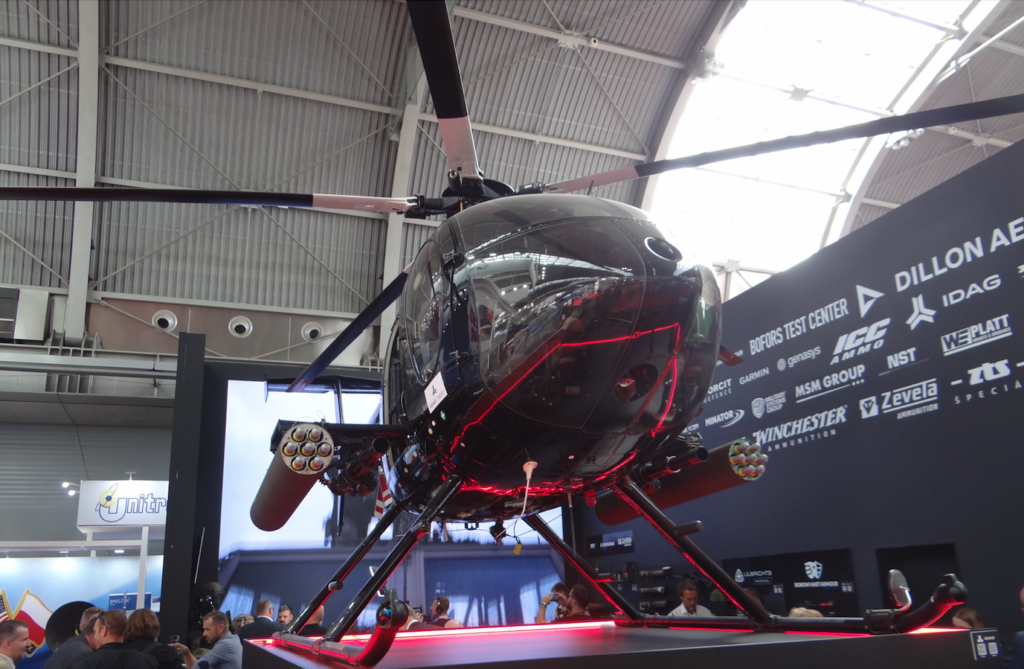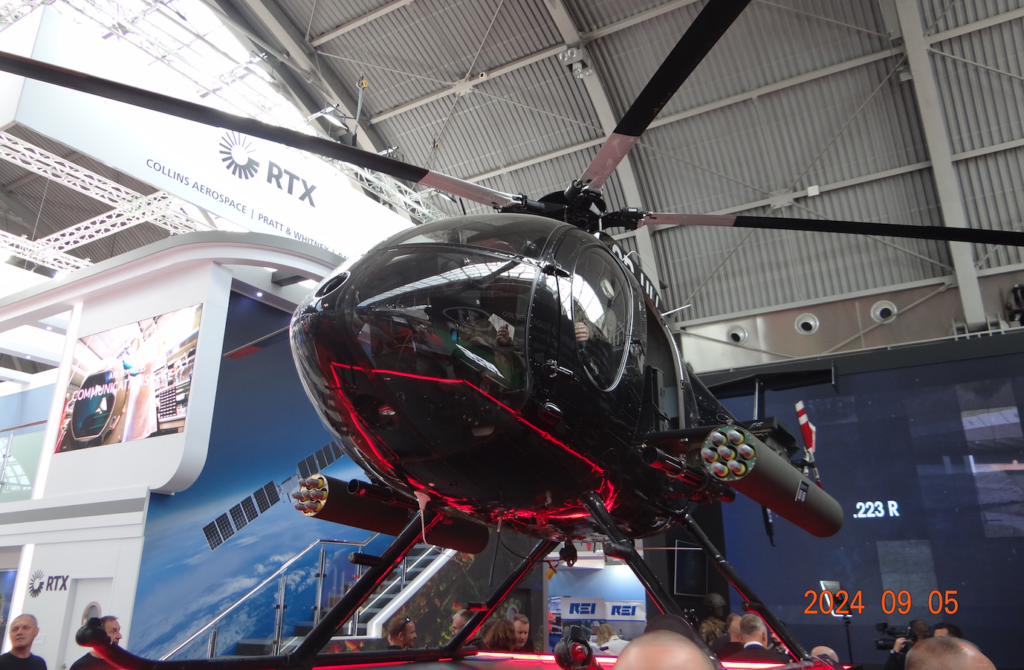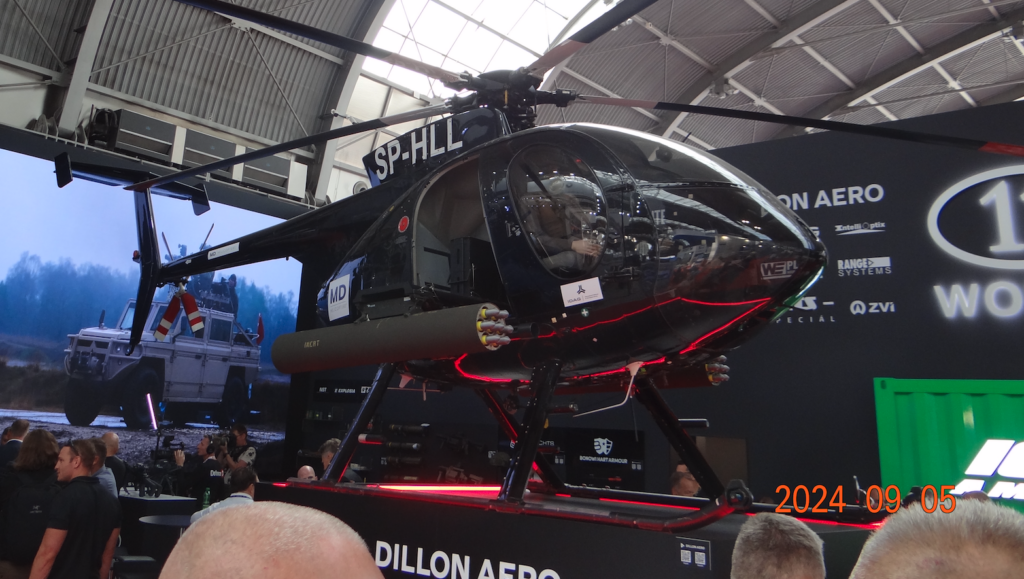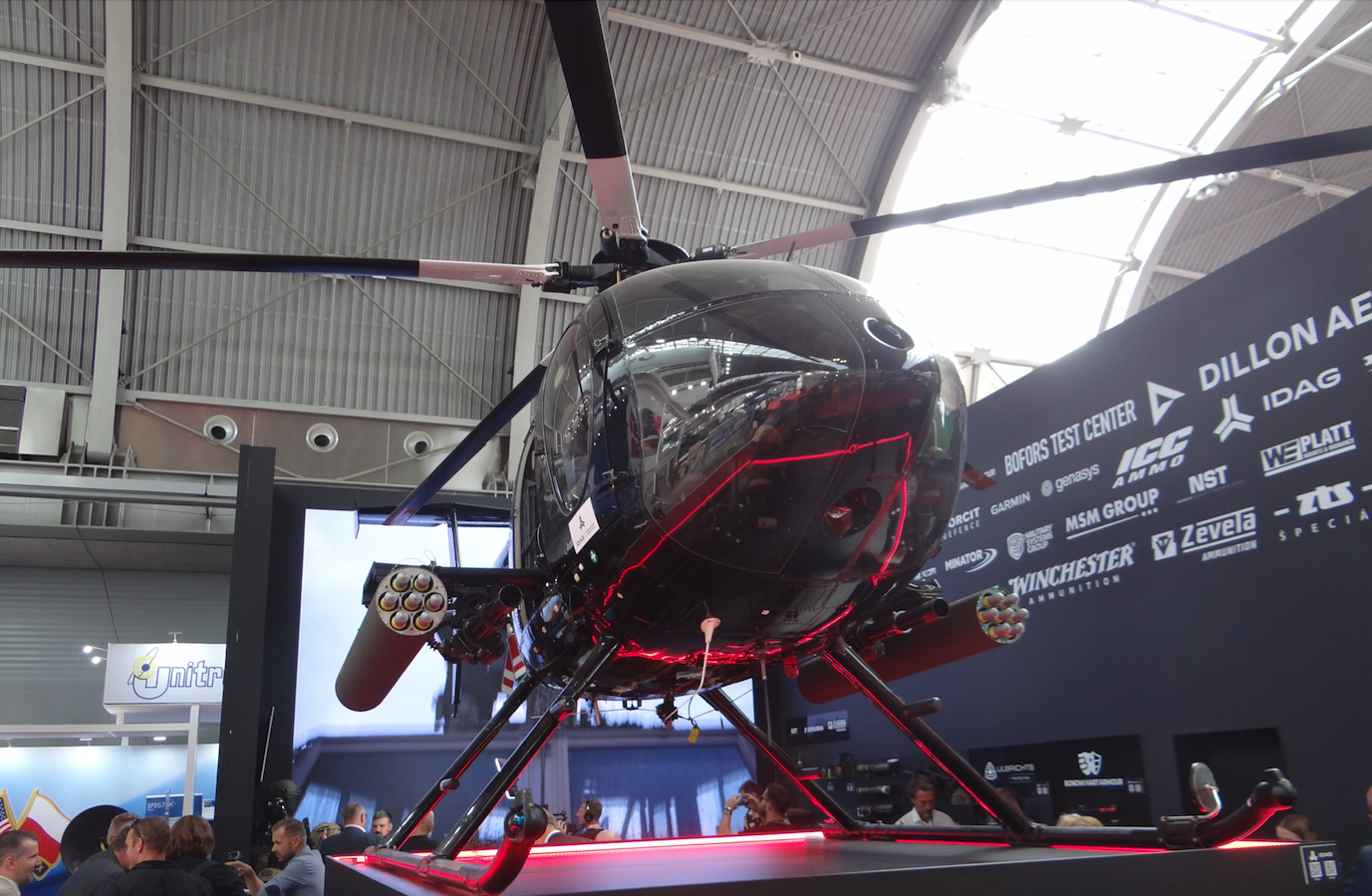Kielce 2025-01-16
Hughes 369E, McDonnell Douglas MD-500.



McDonnell Douglas MD-500 is an American single-engine light multi-role helicopter built in the classic Sikorsky layout. The helicopter uses a five-blade main rotor. A single turbine engine is used for propulsion. Work on the helicopter was started by Hughes in 1963. The first flight took place on February 27, 1963. The first flight of a serial helicopter was performed in 1967. The helicopter became very popular and entered the military and civil aviation of many countries in the world. To date (2025), over 4,700 units have been built. Helicopters are used in: Afghanistan, Argentina, Chile, Croatia, Philippines, Finland, Haiti, Spain, Honduras, Iceland, Iran, Japan, Jordan, Kania, North Korea, South Korea, Mexico, Panama, El Salvador, USA, Taiwan, Italy. The helicopter is manufactured by Hughes Helicopters, McDonnell Douglas Helicopter Systems and MD Helicopters. The helicopter is piloted by two pilots who sit side by side.
In 1984, work began on a light combat helicopter, designated MD 500/530 Defender. The design was equipped with unguided and guided missiles and machine guns.
The helicopter is powered by one Allison 250C-20R turboshaft engine, with a power of 330 kW (450 hp). The rotor diameter is 8.34 m. The fuselage length is 7.62 m. The take-off weight is 1,746 kg. The maximum speed is 282 km/h. The climb rate is 10.5 m/s. The dynamic ceiling is 6,097 m. The range is 409 km.
In the 60s, the helicopter in the Hughes 500 / MD 500 version was selected by the US Army as an observation helicopter, under the designation Hughes 369. The helicopter defeated competitors from Bell and Hiller. In the 60s, the helicopter cost 56,550 US dollars. The fuselage was formed in the shape of a teardrop, to reduce aerodynamic drag. That is why some call it the “Flying Egg”. The helicopter received a skid landing gear. The engine was placed in the rear part, and its exhaust was placed under the tail boom. The fuel tank and batteries were placed under the cockpit floor. The main rotor, of small diameter, allows the use of a short tail boom. Thanks to this, the helicopter has compact dimensions and can land on a small surface.
More than 20 versions of helicopters were created, and one of them is the MD 500E (369E). The helicopter was certified in 1982. The version received a reprofiled front fuselage. Structural elements were reinforced to mount beams for hanging weapons.
More powerful engines were gradually used. In 1966, Allison 250-C18B with 317 hp (236 kW). Allison 250-C20 with 400 hp (298 kW). In 1976, Allison 250-C20B with 420 hp (313 kW). In 1991, Rolls-Royce (previously Allison) 250-C20R/2 with 450 hp. Rolls-Royce (formerly Allison) 250-C30HU of 650 hp (485 kW).
T-T Hughes 369 data: Crew 2. Length 32 ft 7 in (9.93 m). Height 8 ft 9 in (2.67 m). Empty weight 1,591 lb (722 kg). Maximum takeoff weight 3,550 lb (1,610 kg). Main rotor diameter 27 ft 4 in (8.33 m). Main wheel area 587.5 sq ft (54.58 m2). Main rotor blade profile NACA 0012. Maximum speed 152 kn (175 mph, 282 km/h). Cruise speed 135 kn (155 mph, 250 km/h). Range 223 nmi (257 mi, 413 km). Operational ceiling 18,700 ft (5,700 m). Rate of climb 2,070 ft/min (10.5 m/s).
Written by Karol Placha Hetman

